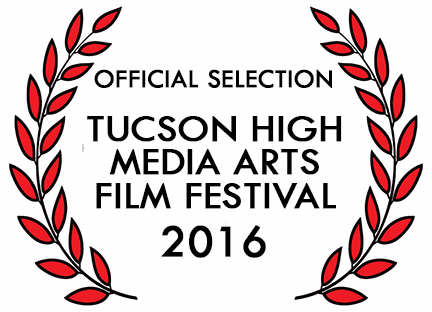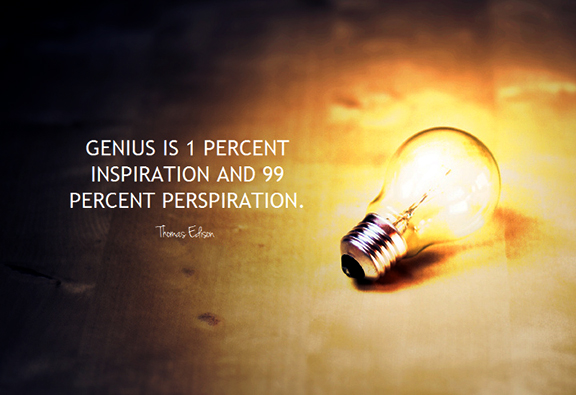FINDING YOUR INSPIRATION
For this project, you will need to select an inspiration for your final large project: a 5-10 minute short film based on an original screenplay. This inspiration can be many things: a song, a piece of visual art, a piece of literature, a philosophy, a place in nature, architecture, etc. Basically, I would like you to select something that has affected you emotionally and use it to influence an idea for a film. I don’t want you to create an adapted screenplay (where you rewrite a pre-existing story for the screen); this must be an original idea. This requires that you transfer the feelings into a structure and create a concept that is directly influenced, both aesthetically and storywise by your emotions.
You will complete the following:
Working with a small group (no larger than 3) or individually with permission, create a 5-10 minute short. This production must include a screenplay using the proper screenwriting format (5-10 pages in length). Each screenplay must be accompanied by a set of your own index cards each containing the different scenes in your film (location/time change).
THE FOLLOWING IS REQUIRED:
- Short Film Worksheet and screenplay template. 50 points
- Properly formatted screenplay and set of index cards. 50 points
- An appropriate soundtrack, titles and credits. 25 points
- Final produced DVD. 100 points
- DVD Package. 25 points
250 TOTAL POINTS POSSIBLE
The instructor MUST approve all ideas before any production begins.
YOU WILL HAVE 5 DEADLINES TO MEET FOR THIS ASSIGNMENT.
Short Film Worksheet: TUESDAY 3/15
Screenplay Template: THURSDAY 3/17
Screenplay (With Index Cards) Due date: FRIDAY 4/1
Shooting Progress: FRIDAY 4/15
Final DVD (Includes package): FRIDAY 4/19

GUIDELINES:
- You may NOT appear in your own work as a main character, only as supporting or minor characters.
- You may not stray far from your screenplay final draft. Minor modifications only.
- All content MUST be appropriate for a school production.
-
There will be no guns, suicides or dangerous stunts allowed in any of these films.
- Please AVOID: flashbacks, redundant narration, the park, excessive running/driving/walking/reading scenes, waking up and getting ready scenes, music video-esque montages, bad parental acting, unbelievable relationships or situations, use of my classroom as a location, masks, Mt. Lemmon, Gates Pass, that party scene with like five guests holding red cups, teenagers playing adults, chase scenes in the hallways of THMS, someone who is wandering around searching for something or some meaning of life, watching people play video games, watching people eat way longer than we should have to, that romantic candle light dinner with spaghetti and wine glasses, BASICALLY ANYTHING THAT IS PLAYED OUT OR NOT INTERESTING ANY LONGER. 😴
TECHNICAL REMINDERS
- Check all exposures before shooting (is your image grainy or pixilated?)
- Make sure your sound levels are okay (use an external mic and digital recorder when possible)
- Wear headphones when shooting
- Use a tripod and/or hold your camera as steady as possible
- Make sure your camera is set to your specified settings (not the person who used the camera before you)
- Be prepared to modify the light in your scenes with tools like LEDs/reflectors/diffusers/flags/lamps
- Be careful with backlighting (look behind your point of focus!)
- Always record room noise or ambient sound for every scene for ease in the editing process that follows.
SOUND EDITING
Your edited scenes should include Foley and ADR (Automated Dialogue Replacement) work when appropriate. Your microphones when shooting should be focused only on the character dialogue avoiding background noises and distractions. Foley work should be used to fill in nuances and bridge any gaps in the background noise (very important when looping as there is no background noise when doing ADR). The goal of your sound editing should be to create a fluid sounding audio track that does not detract from the imagery. Remember that sounds like car engines, explosions, laser blasts, bird noises etc are not considered Foley work, but rather work for the sound effects editor (using libraries of sound effects). Think of Foley work as sounds that humans make (footsteps, scratching, shaking dice, grinding teeth, shaving, etc).
“The VVitch” is a good example of finding a creative voice through inspiration.

THE TWENTY BASIC PLOTS
#1 QUEST – the plot involves the Protagonist’s search for a person, place or thing, tangible or intangible (but must be quantifiable, so think of this as a noun; i.e., immortality).
#2 ADVENTURE – this plot involves the Protagonist going in search of their fortune, and since fortune is never found at home, the Protagonist goes to search for it somewhere over the rainbow.
#3 PURSUIT – this plot literally involves hide-and-seek, one person chasing another.
#4 RESCUE – this plot involves the Protagonist searching for someone or something, usually consisting of three main characters – the Protagonist, the Victim & the Antagonist.
#5 ESCAPE – plot involves a Protagonist confined against their will who wants to escape (does not include some one trying to escape their personal demons).
#6 REVENGE – retaliation by Protagonist or Antagonist against the other for real or imagined injury.
#7 THE RIDDLE – plot involves the Protagonist’s search for clues to find the hidden meaning of something in question that is deliberately enigmatic or ambiguous.
#8 RIVALRY – plot involves Protagonist competing for same object or goal as another person (their rival).
#9 UNDERDOG – plot involves a Protagonist competing for an object or goal that is at a great disadvantage and is faced with overwhelming odds.
#10 TEMPTATION – plot involves a Protagonist that for one reason or another is induced or persuaded to do something that is unwise, wrong or immoral.
#11 METAMORPHOSIS – this plot involves the physical characteristics of the Protagonist actually changing from one form to another (reflecting their inner psychological identity).
#12 TRANSFORMATION – plot involves the process of change in the Protagonist as they journey through a stage of life that moves them from one significant character state to another.
#13 MATURATION – plot involves the Protagonist facing a problem that is part of growing up, and from dealing with it, emerging into a state of adulthood (going from innocence to experience).
#14 LOVE – plot involves the Protagonist overcoming the obstacles to love that keeps them from consummating (engaging in) true love.
#15 FORBIDDEN LOVE – plot involves Protagonist(s) overcoming obstacles created by social mores and taboos to consummate their relationship (and sometimes finding it at too high a price to live with).
#16 SACRIFICE – plot involves the Protagonist taking action(s) that is motivated by a higher purpose (concept) such as love, honor, charity or for the sake of humanity.
#17 DISCOVERY – plot that is the most character-centered of all, involves the Protagonist having to overcome an upheavel(s) in their life, and thereby discovering something important (and buried) within them a better understanding of life (i.e., better appreciation of their life, a clearer purpose in their life, etc.)
#18 WRETCHED EXCESS – plot involves a Protagonist who, either by choice or by accident, pushes the limits of acceptable behavior to the extreme and is forced to deal with the consequences (generally deals with the psychological decline of the character).
#19 ASCENSION – rags-to-riches plot deals with the rise (success) of Protagonist due to a dominating character trait that helps them to succeed.
#20 DECISION – riches-to-rags plot deals with the fall (destruction) of Protagonist due to dominating character trait that eventually destroys their success.
(Note: Sometimes #19 & #20 are combined into rags-to-riches-to-rags (or vice versa) of a Protagonist who does (or doesn’t) learn to deal with their dominating character trait.)

